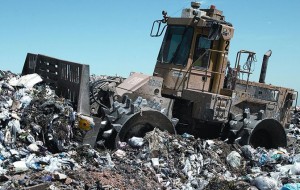
Landfills will be reduced and electricity and heat will be generated by the planned waste-to-energy plants.
VILNIUS — Lithuania is trying to bring the waste disposal process full circle — powering the country by burning garbage.
In a bid to increase the amount of renewable energy in the country and reduce reliance on outside sources, the Lithuanian Energy Ministry is creating waste-to-energy plants that incinerate rubbish to generate electricity and heat.
“The construction of waste burning plants in Lithuania will help solve several problems,” Kęstutis Jauniškis, an energy ministry spokesperson, told Baltic Reports. “Firstly, waste burning is one of the cheapest and most efficient ways of ensure the supply of electric power and thermal energy. Secondly, the problem of landfills will be solved. The objective of Lithuania is the increase of energy security and the decrease of dependency on the only gas supplier, Gazprom.”
Jauniškis said that renewable energy needed more attention in Lithuania for effective energy production.
“As regards renewable energy sources, here we mean wind energy, small hydroelectric power plants, and burning of the biomass and bio-gas. However, waste burning constitutes a priority which so far has not received any major attention,” he said.
Lithuania plans to build plants near five to seven major cities with the first to be built within five years. The plants not only produce heat and electricity, but slow the spread of landfills.
Energy Minister Arvydas Sekmokas recently completed a trip to Denmark and noted that Lithuania lags around 50 years behind the Danes in the sector.
“The burning of waste is one of the cheapest and most efficient ways to get electricity and heating. Denmark understood this after WWII, and Lithuania has to make the first moves in this direction only now,” Sekmokas said.
Initially Lithuania had steered away from incineration plants fearing pollution and ungainly fumes, but following the trip, the minister said his fears were dispelled.
“I heard a lot of arguments that the bad smell and fumes exhausted by it poison surrounding residents. Yes, there is unpleasant smell, however, only in closed premises, where the waste is put. It cannot be compared let’s say to the awful smell of the Kariotiškės waste dump. No smell can be felt near the plant,” Sekmokas said.
Waste-to-energy plants equipped with new technology so they emit less carbon emissions than fossil fuel plants.
“Studies show that in the process of waste burning less carbon dioxide is exhausted compared to the process of burning of gas or oil products,” Jauniškis told Baltic Reports.
A 1994 Delaware Solid Waste Authority found that for same amount of produced energy, incineration plants emitted fewer particles and hydrocarbons than coal-fired power plants but more than natural gas plants.












